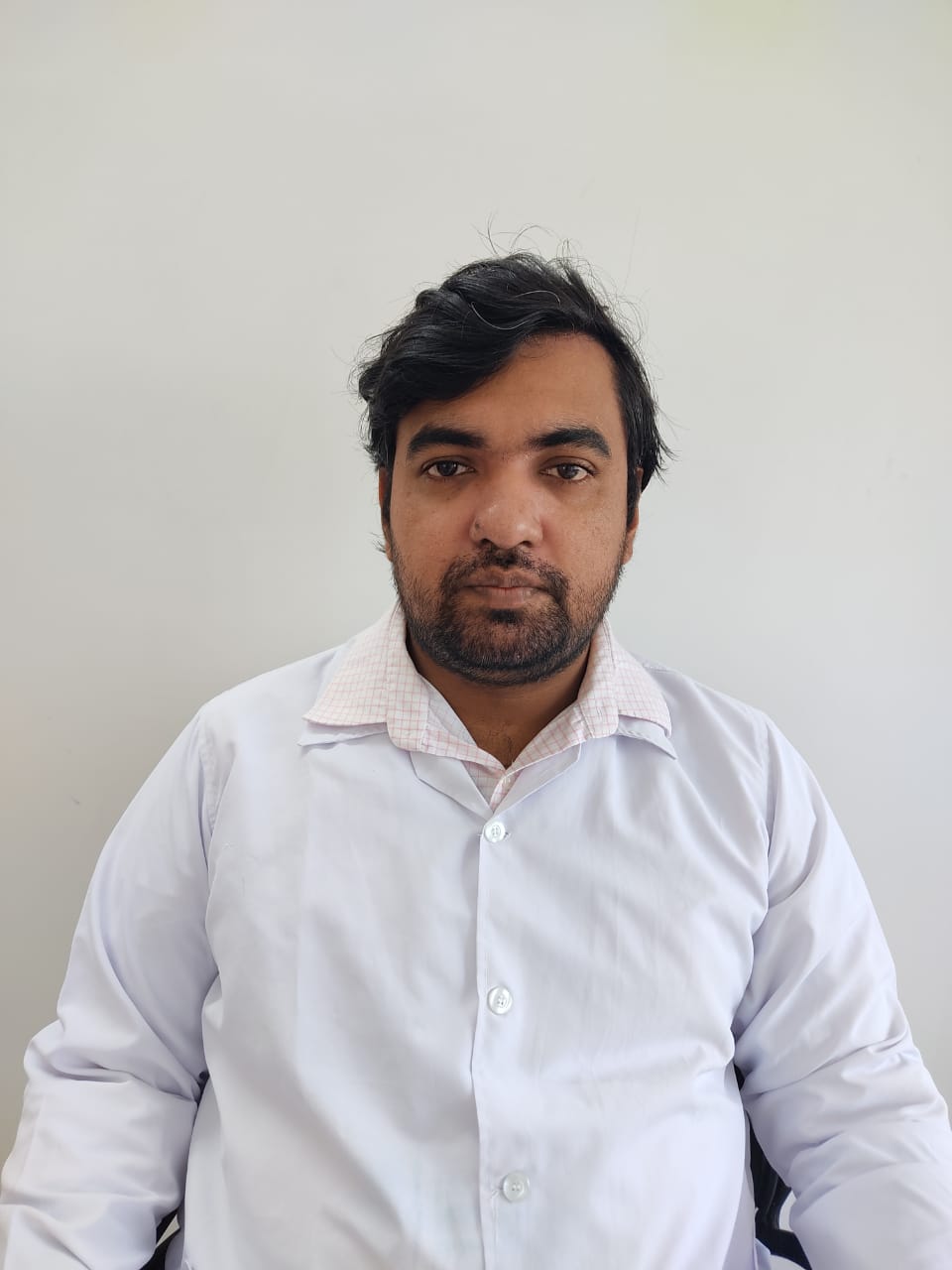Guide to Radiofrequency Treatment Chronic Back Pain And Neck Pain
Explore the radiofrequency ablation procedure for chronic back and neck pain. Learn how this effective, minimally invasive treatment works to provide long-lasting relief.

Written by Dr. Mohammed Kamran
Reviewed by Dr. Shaik Abdul Kalam MD (Physician)
Last updated on 3rd Oct, 2025

Introduction
Living with chronic back or neck pain can feel like a relentless battle, diminishing your quality of life and limiting everyday activities. If you've tried physical therapy, medications, and injections with only temporary results, you may be searching for a longer-lasting solution. This is where radiofrequency treatment, specifically radiofrequency ablation (RFA), emerges as a beacon of hope for many. This minimally invasive procedure is designed to target and disrupt the very nerves responsible for sending pain signals to your brain. Think of it as turning down the volume on your pain. In this comprehensive guide, we will demystify radiofrequency treatment, explaining how it works, who it's for, and what you can realistically expect from the procedure. Our goal is to empower you with the knowledge needed to have an informed conversation with your pain management specialist about whether this innovative approach could be your key to a more comfortable, active life.
What is Radiofrequency Ablation? A Modern Pain Management Tool
Radiofrequency Ablation (RFA) is a sophisticated medical procedure used by pain management doctors to treat chronic pain, particularly in the back, neck, and joints. It’s not a surgery in the traditional sense—there are no large incisions or lengthy hospital stays. Instead, it’s a precise, needle-based technique that uses heat generated by radio waves to deactivate specific nerves that are carrying pain signals.
The concept isn't to "burn" the nerve away entirely, but to create a small, controlled lesion on the nerve tissue. This lesion interrupts the nerve's ability to transmit pain messages to the brain. It's crucial to understand that RFA targets sensory nerves responsible for pain perception, not motor nerves that control muscle movement, which minimizes the risk of weakness.
How Does Radiofrequency Treatment Actually Work?
The principle is elegantly simple. A pain management specialist uses a live X-ray (fluoroscopy) to guide a thin, insulated needle—called a cannula—directly to the precise nerve causing the problem. Once the needle's tip is in the perfect position, a small electrode is inserted through it. A radiofrequency current is then passed through this electrode, which heats the tip to a specific temperature (typically around 80°C). This heat creates a small, precise lesion on the nerve, effectively muting its pain-signaling capability for a significant period.
Conventional vs. Pulsed Radiofrequency: What's the Difference?
Not all radiofrequency treatments are the same. The two main types are:
• Conventional RFA: This is the standard approach described above, using continuous heat to create a lesion. It's highly effective for nerves like the medial branches that innervate the facet joints in the spine. The effects are longer-lasting but are a more permanent disruption to the nerve.
• Pulsed RFA: This newer technique uses short bursts of radiofrequency energy without significant heat. The goal is to neuromodulate—or alter the function of—the nerve rather than destroy it. It's often considered for nerves closer to the spinal cord or where preserving nerve function is a higher priority. The pain relief from pulsed RFA may be significant but is often of a shorter duration than conventional RFA. Your doctor will recommend the best type based on your specific anatomy and facet joint arthritis.
Consult Top Specialists
Is Radiofrequency Treatment Right for Your Back or Neck Pain?
RFA isn't a first-line treatment. It's typically recommended after conservative options like physical therapy, anti-inflammatory medications, and corticosteroid injections have failed to provide adequate or lasting relief. Its success is highly dependent on accurately identifying the correct pain generator.
Common Conditions Treated with Radiofrequency Ablation
RFA is most successful for pain originating from specific spinal joints and structures. Common conditions include:
• Facet Joint Syndrome: This is the most common indication. The facet joints are small stabilizing joints located at the back of the spine. When they become arthritic or injured, they can be a primary source of chronic back or neck pain.
• Sacroiliac (SI) Joint Dysfunction: Pain originating from the joint connecting the sacrum to the pelvis can also be effectively treated with RFA.
• Chronic Cervicogenic Headaches: These are headaches that originate from problems in the neck's structures, often the upper cervical facet joints.
• Peripheral Nerve Pain: RFA can be used for certain types of nerve pain in other areas, like the knee (genicular nerves) for osteoarthritis.
The Ideal Candidate: Who Benefits Most from This Procedure?
The best candidates for radiofrequency ablation for chronic back pain generally share these characteristics:
1. They have experienced pain for more than 3-6 months.
2. Conservative treatments have provided only temporary relief.
3. Their pain is primarily axial (confined to the back or neck) rather than radiating down a limb (like sciatica), unless the radicular pain is directly linked to a facet joint.
4. They have had a positive response to a diagnostic medical branch block (which we'll discuss next). This is the most critical predictor of success.
The Radiofrequency Ablation Procedure: What to Expect Step-by-Step
Understanding the process can alleviate much of the anxiety surrounding the procedure. It's typically performed as an outpatient procedure in a clinic or hospital setting.
Step 1: The Crucial Diagnostic Nerve Block
Before an ablation is ever scheduled, you will undergo a diagnostic nerve block. This is a vital step to confirm that the nerves targeted are indeed the source of your pain. The doctor will inject a local anesthetic onto the suspected nerves. If your pain decreases significantly (usually by 70-80%) for the duration of the anesthetic, it's a strong indicator that a diagnostic medial branch block before ablation will be successful. If the block doesn't provide relief, it suggests the pain is coming from elsewhere, and RFA would not be beneficial.
Step 2: The Day of Your RFA Procedure
On the day of the procedure, you will be asked to lie on an X-ray table. The skin will be cleansed and numbed with a local anesthetic. Using fluoroscopic guidance, the doctor will carefully insert the needle(s) toward the target nerves. You may feel some pressure or mild discomfort. Once the needle is correctly positioned, a small electrical current may be used to stimulate the nerve, ensuring it's the correct one and not a motor nerve. Then, the radiofrequency energy is applied for 60-90 seconds per site.
A Note on Discomfort and Anesthesia
Most patients are under local anesthesia and are awake during the procedure, though you may be given sedation to help you relax. Being awake is important because you can provide feedback to the doctor. The entire process usually takes between 30 and 90 minutes, depending on the number of nerves being treated.
Life After the Procedure: Recovery and Results
The First 72 Hours: Managing Post-Procedure Soreness
It's normal to experience a flare-up of pain, soreness, or muscle spasms at the injection site for a few days after the radiofrequency procedure. This is similar to a deep muscle bruise. Your doctor will likely recommend ice packs and over-the-counter pain relievers to manage this. You should avoid strenuous activity for the first 24-48 hours but can typically return to light duties the next day.
When Will I Feel the Full Benefits?
The initial soreness usually subsides within a week. The targeted nerves don't fully degenerate immediately; it can take 2 to 3 weeks for the full pain-relieving effects to manifest. Many patients describe a gradual reduction in their chronic pain, leading to a significant improvement in their ability to function. The pain relief duration varies from person to person, but it typically lasts between 9 and 18 months. Because the nerves can regenerate, the procedure may need to be repeated when the pain returns.
Weighing the Pros and Cons: Is RFA Worth It?
The Significant Benefits of Radiofrequency Treatment
Long-Lasting Relief: Provides significantly longer relief than steroid injections.
• Minimally Invasive: No surgical incision, minimal scarring, and low risk of infection.
• Improved Function: Reduces pain, allowing for better participation in physical therapy and daily activities.
• Reduced Medication Use: Many patients can reduce or eliminate their reliance on pain medications.
Potential Risks and Side Effects to Consider
While generally safe, potential side effects of RFA include:
1. Temporary numbness, tingling, or burning sensation in the treated area.
2. Skin hypersensitivity or a localized ache for a few weeks.
3. The small risk of infection or bleeding at the injection site.
4. The possibility of no pain relief or less relief than expected.
5. Very rarely, nerve damage can occur, but this is minimized by the use of advanced imaging.
Conclusion
Radiofrequency ablation represents a significant advancement in the management of chronic spinal pain. By offering a minimally invasive path to long-term relief, it has helped countless individuals reduce their dependence on medication and reclaim their active lives. While not a cure-all, its targeted approach provides a powerful tool when conservative measures are no longer enough. The key to success lies in an accurate diagnosis and a clear understanding of the procedure's benefits and limitations.
If you have been struggling with persistent back or neck pain, the most important step is to consult with a specialist who can determine if RFA is appropriate for you. A pain management doctor can conduct a thorough evaluation, which may include a diagnostic block, to see if you are a good candidate. If your condition is complex, you can consult a specialist online with Apollo24|7 for an initial opinion or to book a physical visit for a comprehensive assessment. Taking this proactive step could be the beginning of your journey toward lasting pain relief and a better quality of life.
Consult Top Specialists
Consult Top Specialists

Dr. Rajib Ghose
General Physician/ Internal Medicine Specialist
25 Years • MBBS
East Midnapore
VIVEKANANDA SEBA SADAN, East Midnapore

Dr. Shaik Abdul Kalam
General Practitioner
3 Years • MD (Physician)
Visakhapatnam
Apollo 24|7 Clinic - Andhra Pradesh, Visakhapatnam
(150+ Patients)

Dr. Rohinipriyanka Reddy
General Practitioner
9 Years • MBBS
Hyderabad
Apollo 24|7 Clinic, Hyderabad

Dr. Mijanur Rahaman Mondal
General Practitioner
3 Years • MBBS
Kolkata
Dr Utsa Basu Clinic, Kolkata
(25+ Patients)

Dr. Vishal Kumar H
General Physician/ Internal Medicine Specialist
8 Years • MBBS, master class in critical care medicine, Advanced Post Graduate Diploma in Non Invasive Cardiology, certificate course in Cardiovascular Disease & Stroke, Certificate course in Common Mental Disorder
Bengaluru
Apollo Clinic, Basavanagudi, Bengaluru
Consult Top Specialists

Dr. Rajib Ghose
General Physician/ Internal Medicine Specialist
25 Years • MBBS
East Midnapore
VIVEKANANDA SEBA SADAN, East Midnapore

Dr. Shaik Abdul Kalam
General Practitioner
3 Years • MD (Physician)
Visakhapatnam
Apollo 24|7 Clinic - Andhra Pradesh, Visakhapatnam
(150+ Patients)

Dr. Rohinipriyanka Reddy
General Practitioner
9 Years • MBBS
Hyderabad
Apollo 24|7 Clinic, Hyderabad

Dr. Mijanur Rahaman Mondal
General Practitioner
3 Years • MBBS
Kolkata
Dr Utsa Basu Clinic, Kolkata
(25+ Patients)

Dr. Vishal Kumar H
General Physician/ Internal Medicine Specialist
8 Years • MBBS, master class in critical care medicine, Advanced Post Graduate Diploma in Non Invasive Cardiology, certificate course in Cardiovascular Disease & Stroke, Certificate course in Common Mental Disorder
Bengaluru
Apollo Clinic, Basavanagudi, Bengaluru
More articles from General Medical Consultation
Frequently Asked Questions
1. How long does radiofrequency ablation last?
The area is numbed with local anesthesia, so the procedure itself involves mostly pressure. It is common to have some soreness afterward, similar to a muscle strain, for a few days.
3. What are the alternatives to radiofrequency ablation?
Alternatives include continued physical therapy, medications, regular corticosteroid injections, spinal cord stimulation, or in some cases, surgery. The best option depends on the specific cause of your pain.
4. Will I be asleep during the RFA procedure?
Most patients are awake but may receive mild sedation to help them relax. Being awake allows you to provide feedback to the doctor, which enhances safety and precision.
5. Are there any activity restrictions after RFA?
You should avoid strenuous exercise, heavy lifting, and bending for the first few days. Most people can return to desk work and light activities within 24-48 hours. Your doctor will provide specific guidelines.

_1.webp)


